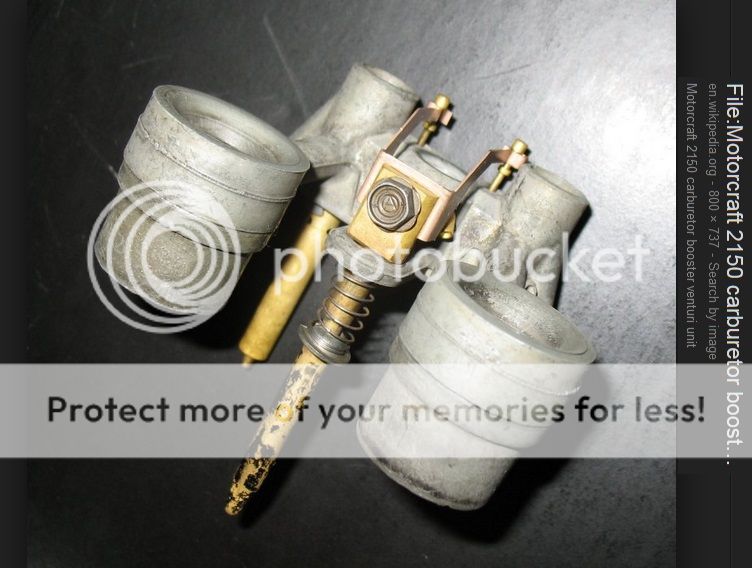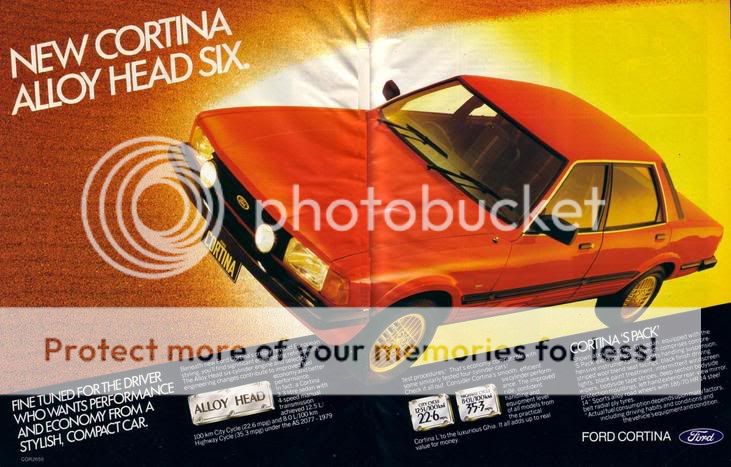wsa111":1wmaubf1 said:
Need more info, fuel pressure, ignition type & settings @ camshaft. After you supply the info need A/F ratios.
Could be a leaking power valve, but are you running ported vacuum or manifold vacuum.

:thanks:

This for free, from another brilliant guy who has a lot of experience with carb Fords as well as EFI ones. And an Aussie Intech 6 ....
http://vb.foureyedpride.com/showthread. ... ance/page2
Ethyl Cat":1wmaubf1 said:
Usually when I see someone trying to rescience a carb this much, the carb is not the problem. More often then not it is an ignition issue. In your first post you state you are running a stock Duraspark II. This is an ignition design to provide spark for a 8.3:1 302 and you have it powering a 10.5:1 347.
I thought an 85 had TFI?
Lean cruise stresses ignition quite a bit. Usually if I want to find a misfire i get a car in high gear and lug it up an incline. Lean mixture with some load(cylinder pressure). That Dura II is 33 years old!!!
A weak pick up output signal starts coil saturation late and ends it early resulting in a weak spark.
You might take some time to stress test that ignition system and see if it can keep up. Anybody with an ignition scope around there that knows how to test?
Just some thoughts
Steve
Yeah, ignition first port of call. But that means a proper full check like
viewtopic.php?f=1&t=72349&p=555788#p555788
cr_bobcat":1wmaubf1 said:
So I've finally gotten around to mapping the timing events of this new HEI style distributor. This morning I just measured with the vacuum can connected. Tomorrow morning I will measure with it disconnected and the hose plugged. I started at about 700 RPM as this was about as low as I could drop it and keep the engine running reliably.
RPM Timing
----------------
700 16
800 16
900 16
1000 16
1250 20
1500 25
1750 34
2000 39
2250 42
2500 45
2750 47
3000 50
I have an timing light with a built in tach and advance adjustment. Obviously all measurements here are approximate.
This seems a bit aggressive to me but obviously I don't know for sure what this profile should look like otherwise I wouldn't be here. I'm pretty sure my curve is off but that's based off of a gut feeling that I feel like there's more power to be had with my current setup. She just feels a little mushy. Am I right in my assumption here or are things looking ok? Do I need to take some more measurments with vacuum connected?
Pertinent info: idle currently set at 1000, Holley 1940 carb, stock exhaust, unknown cam (let's assume stock), C4, unknown rear-end (again, let's just assume stock)
I still plan to measure how much vacuum I have but haven't gotten that far yet. I've got a guage but I just haven't taken the time to do it. I should just do that tomorrow when I plan to disconnect the can and check to see how much mechanical advance I'm actually looking at.
I don't really like any of the non stock PCV/ PVS/ TVS and non metered air cleaners.
Smelling gas and actual air fuel ratios are different things. Loosing gas, check the PV basics.

I don't like non standard 1968 to 1985 Autolite/Motorcraft/Holley 4180c line hookups. A good carb and ignition guy like Bill can get away with it, but I like the three port carb ports and dual advance era Fords. I like EGR, turning my carbed car on, and letting it idle and having a choke that works and all that jazz. Line hook ups, and A/C kickers and all that emissions era stuff gets stipped off when you put a 2150 on an I6, and so you don't have some simple solutions to restarts.
The Ford solution was to play off the TVS valves, and get some really aggressive spark timing, and then use the choke pul off to get the car warm. Then restarts were easy.
If it uses an Anular Discharge carb ( Like the Autolite 4100/2100/Motorcraft 2150 or Summit 4010 style carb), then you should use the spark delay system the way FoMoCo did. And go to running the Duraspark the same way Ford intended.
There are alternative views on this, and its all to do with how complicated you wanna make it for yourself.
ttp://vb.foureyedpride.com/showthread.p ... ance/page2
xctasy":1wmaubf1 said:
Its not Air Fuel, its igntion advance you need to play with.
This is a cold start issue that Ford fixed in 1969 with vacuum lockout delay to cap advance on cold starts. It creates a more load during the early running. Its the whole reason the emissions gear is the way it is with Clean Air carb cars, killing the high compression, long duration cam related warm up matters by swapping to delay valved PVS sourced vacuum.
Distr-o-vac was first,
http://www.aus-ford-uk.co.uk/html/engines.html
with the 10.7:1 351C, then 70-73 Mustangs
and 200 Maverics,
http://1bad6t.com/Maverick/repair/emission_controls_02.html
then the highly refined PVS and manifold vac interplay the 4-bbl 5.0 HO's used, also the 5.0/5.8 HO trucks, 370 4bbl, 429/460 4-bbl carb trucks.
http://vb.foureyedpride.com/showthread.php?96926-83-5-0-vacuum-advance
Its was all over cold start emissions improvement, why things became so complicated.
Its wasn't just Ford being difficult, Cold start Parts Per million emission reduction helps cold start warm up.
http://www.caee.utexas.edu/prof/kockelman/public_html/TRB15coldstarts.pdf
Some modern rebuilt fuel systems have cracks, and need checking. Some 1.08's have bowl vents, and that's where your oxygenated high Etahnol blend gasoline goes.
Other times, you don't have to use all that emissions crap, and you just go to a proper sports curved ignition with a good amount of static advance and your choice of parted or manifold vac to get the right all in by 2800 rpm mark that suits our I6's so well.
Down here in the Antipodean paradise, our 1982 to 92 Overhead valve I6 Fords ran a whole gammit of cool emissions stuff on the 200 and 250 engines, and those cars made 121 to 131 hp with 29.4 US mpg at 62 mph and 19.6 US mpg around the city.
35.3---->29.4 US but at 62 mph.
23.5 OR 22.3 ----->More than 19 US mpg city
Sadly, the PVS figures, mpg and all that kind of stuff are stooopid British imperial and Centigrde, so not much help unless you convert. Both parts of the world, Ford was doing the same kind of stuff.
Same as your USA 3.3 liter Fords did to 1983. The huge power gain over 87 to 91 hp 3.3's was because of just better fuel delivery systems and smaller manifolding with less nasty compound bends, and having an emissions system that helped hot fuel handling and part throttle economy. Your 2.8 V6 carb is designed for a 109 hp engine, 24 to 18 hp up on the stock 200.
Ford really made that 2150 1.08 do a very good job. All the old 3.3/4.1 sixes were stronger than the 2.8 Cologne, and gave great gas mileage.
The ignition was essentially the same, but tuned a little different. Bill can help you with that.











 :thanks:
:thanks: 




